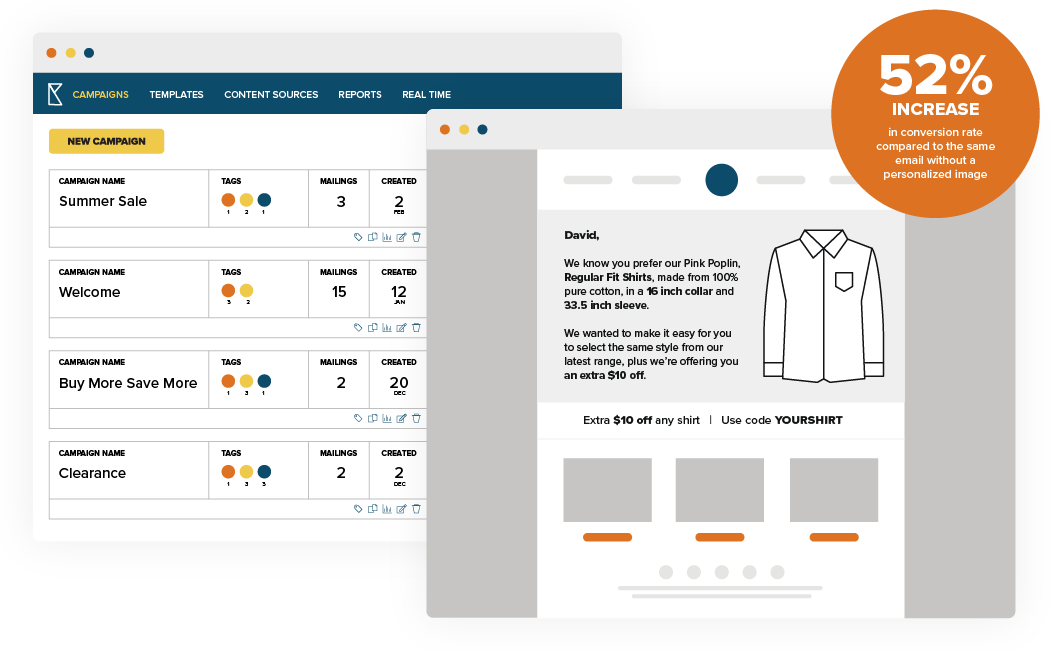How to Make Data Hygiene Your Email Marketing Superpower
Data hygiene may not sound like the most exciting part of email marketing—but it’s one of the most important steps to designing campaigns that perform. The fact is, your data impacts whether (and how well) you can personalize emails, the extent to which your subscribers engage with your messages, and whether they receive them in their inbox at all.
But just as your subscriber data is always in a state of change—data hygiene is not a one and done proposition. It requires discipline, governance, and proactivity with teams (and vendors) across your organization.
We recently picked the brains of experts from Klaviyo, Simon Data, and Litmus Personalize powered by Kickdynamic for their best practices, tips and insights on all things data hygiene, and how to apply it for impactful email personalization.
Read on for some of their top tips—or watch the full webinar on-demand here.
What is data hygiene?
In its broadest form, data hygiene is the act of regularly and consistently ensuring that the data you have about your customers and prospects is accurate, current, trustworthy, and useful.
Why good data hygiene is important
More than 60% of customers expect that the data they trust marketers to handle will be used to improve their customer experience with personalized marketing experiences. But that demands marketers have proactive and ongoing data hygiene strategies in place, to ensure that the information they do have is actionable and correct.
“The raw material that you have in good clean data can really help maximize the effectiveness downstream of all of your marketing efforts.”
Carlos Barrero, Strategic Tech Partner Manager at Klaviyo
And because personalized communication in any form—including email personalization—is all about delivering the exact right message to the exact right customer at the exact right time, Matt Williams, Senior Solutions Architect at Simon Data, says timeliness of the data used to power that experience is critically important, too. Without a solid and consistent data hygiene process, any data could become outdated by the time it’s actually cleaned, pulled and put to use.
How poor data hygiene can impact email marketing
“Poor data hygiene leads to poor engagement, deliverability and return on investment (ROI)—in that order,” says Barrero. Consider how inaccurate data could cause an avalanche of issues, even when applied to the most basic form of personalization in email marketing: the first name in a subject line.
- If person gets a placeholder or variable text instead of seeing their name in what’s supposed to be a personalized message, they may perceive that the brand doesn’t really care about them.
- That seemingly small data misstep can turn the customer off, and start to hurt email engagement.
- Lower engagement can then lead to deliverability issues—which can mean poor ROI.
“If your email isn’t getting through to customers because of a data hygiene issue upstream, you’re not going to maximize the value of the email channel based on whatever you’re spending on it,” says Barrero.
Common reasons data becomes “dirty”
Williams and Barrero say these are common reasons behind data inaccuracy.
- Issues in the extraction of the data source. Collecting raw information (such as from a point-of-sale system) and getting it into a database can be a root cause of issues.
- Inaccurate data modeling based on the platform. Good data can turn bad in an activation layer if it’s not modeled appropriately in the platform. If data has been aggregated, for example, there may not be an awareness that once good data has gone wrong. This can also make it difficult to combine data sources for a 360-view of the customer.
- Lack of awareness of the data source. Whether the issue is with a misunderstanding of latency at which the data is expected to arrive, profile mismatches and duplicate customer profiles, or inconsistent formatting (like dates and fields), not being close enough to the data source to spot preventable issues can cause inaccuracies.
How marketers can start to clean data
Understand your internal data supply chain
Email marketers aren’t always as close to the data supply chain as a marketing operations or IT team might be. Despite the technology tools that are available, simply understanding the details of your organization’s data supply chain (such as the sources and destinations, and the formats of dates, text fields, numbers and the latency at which data is expected to arrive or transact between these different sources) can reduce issues.
If you rely on a vendor to help with data, Williams advises designating an internal employee as the data owner who knows it inside, and out. That person can then communicate with vendors and other departments who may use the data downstream, to ensure awareness of exactly what it is, and how to use it appropriately.
Establish a governance model
Data hygiene issues happen when people use different tools in different ways without a common understanding of how to leverage them. Matt Hayes, General Manager at Kickdynamic, says he’s seen many clients overcome these issues with a governance model or center of excellence that is consistently followed.
Controlling permissions in the data tool itself and designating a power user for every data push can be another step in the right direction. Think through your governance processes to identify which data issues could be avoided with them in place (and enforced).
Create a data dictionary
Barerro works with clients to boost their internal data literacy, and explain what type of data is coming through from a primary source (like an e-commerce site) or a third-party source (like a loyalty program). He then helps them understand what can be done with the type of field, and which types of triggers would be most appropriate. This type of internal education can also be beneficial to members of your organization who get involved with the data.
He also recommends creating a data dictionary, which catalogs what each piece of data means to your company. If a new person or vendor comes onto the team, that dictionary serves as a glossary and source of truth for exactly what the data means to a particular organization, so it can be acted on much more quickly.
Once you successfully clean up your data and standardize it, the data dictionary can also be a useful tool in getting everyone on the same page–and keeping them there! With proper governance and a data dictionary, you avoid the risk of being faced with another clean up exercise soon after you’ve gotten your data in order.

| Create individualized email experiences at scale Get powerful results with uniquely personalized, engaging email experiences that boost customer loyalty and drive revenue with Litmus Personalize, powered by Kickdynamic. |

Stephanie Christensen
Stephanie Christensen was the Director, Content Marketing at Litmus
